A Deeper Look at Gerrymandering
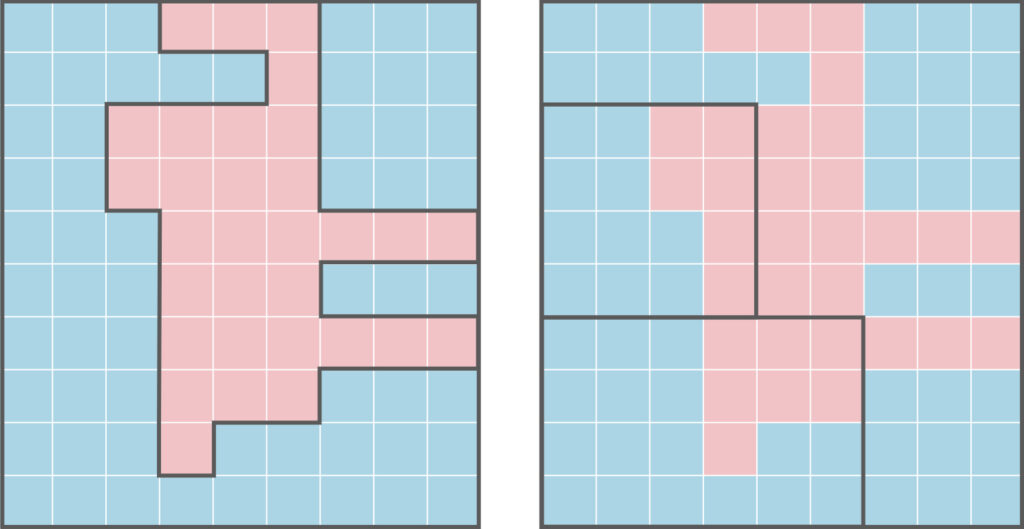
(This is the first post in a two-part series on gerrymandering. To learn about how to identify and solve gerrymandering, read the second post here.)
With political tension running high and the Supreme Court set to establish historic precedence on partisan gerrymandering in Wisconsin, it is useful to understand the different types of gerrymandering and some possible solutions. Moreover, layering demographic and voter data with existing congressional district maps helps reveal some of the consequences and practices of gerrymandering.
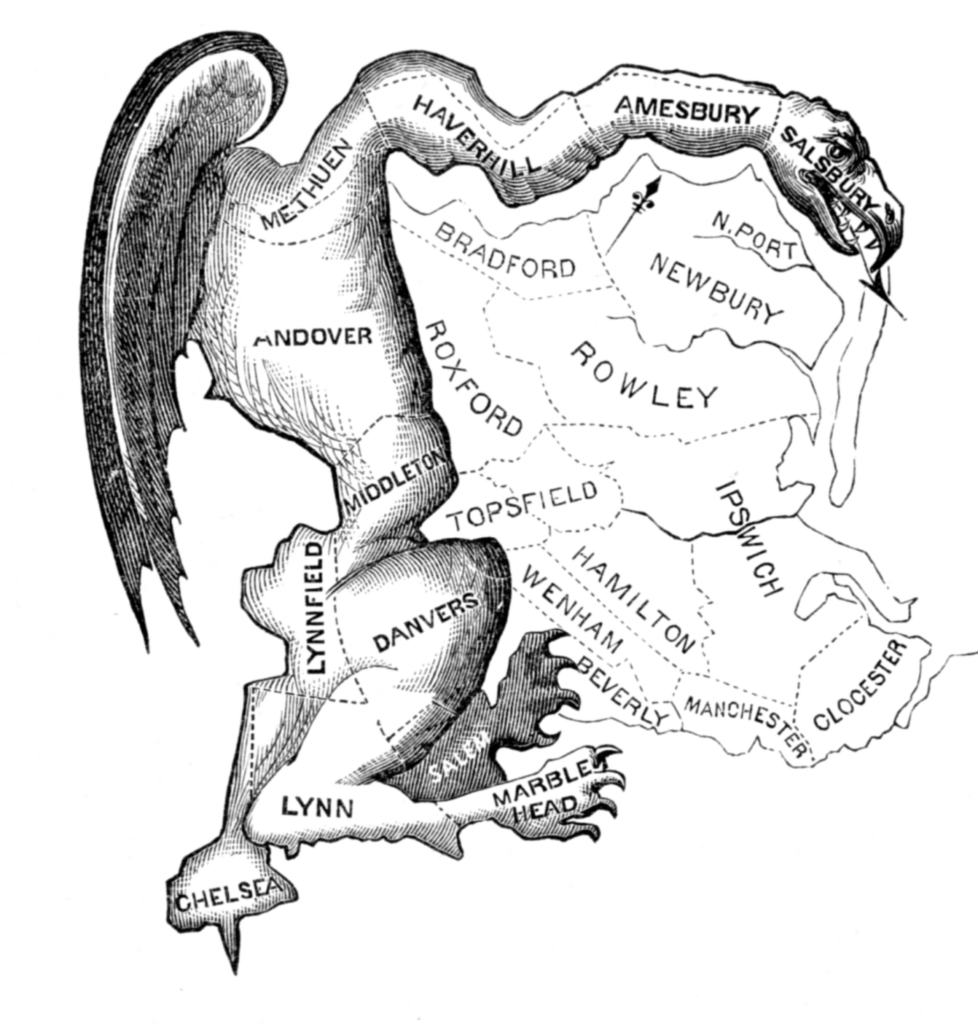
Gerrymandering is not new, and indeed the name was derived from a portmanteau of the name of Governor Elbridge Gerry of Massachusetts and a district he approved in 1812 that was so misshapen as to remind people of a salamander, hence Gerrymander. Congressional districts are required by the U.S. Constitution to be of fairly uniform population, and continuous and compact in geography. Districts must be re-drawn every decade to reflect new population changes as measured in the decennial census. Often, it is the political party in charge of the state government at the turn of the decade that is responsible for drawing redistricting lines, which typically favor the incumbent party.
There are two main strategies behind gerrymandering, “packing” and “cracking”.
Packing
“Packing” concentrates supporters for a particular party/candidate into a single district, thereby decreasing their ability to influence the outcome of surrounding districts. Concentrating voters, however, is not alone enough to be considered gerrymandering. While many associate gerrymandering with partisan acts, some gerrymandering is the result of federally mandated minority-majority districts, which seek to ensure equal representation for minority groups. The hope behind concentrating minority voters into specific districts is to garner enough support to elect representatives that will reflect the needs and priorities of the minority voters in that district. Such minority-majority districts are typically created to conform to the Voting Rights act of 1965, which enforces the 15th Amendment and prevents the creation of representative districts that diminish a racial or language minority. For instance, Florida’s 20th Congressional District is a minority-majority district that concentrates high numbers of African-American voters, and is represented by an African American congressman. By looking at maps of the underlying predominant racial and ethnic groups, it is clear that Florida’s 20th Congressional District represents most of the Black voters in North Miami.
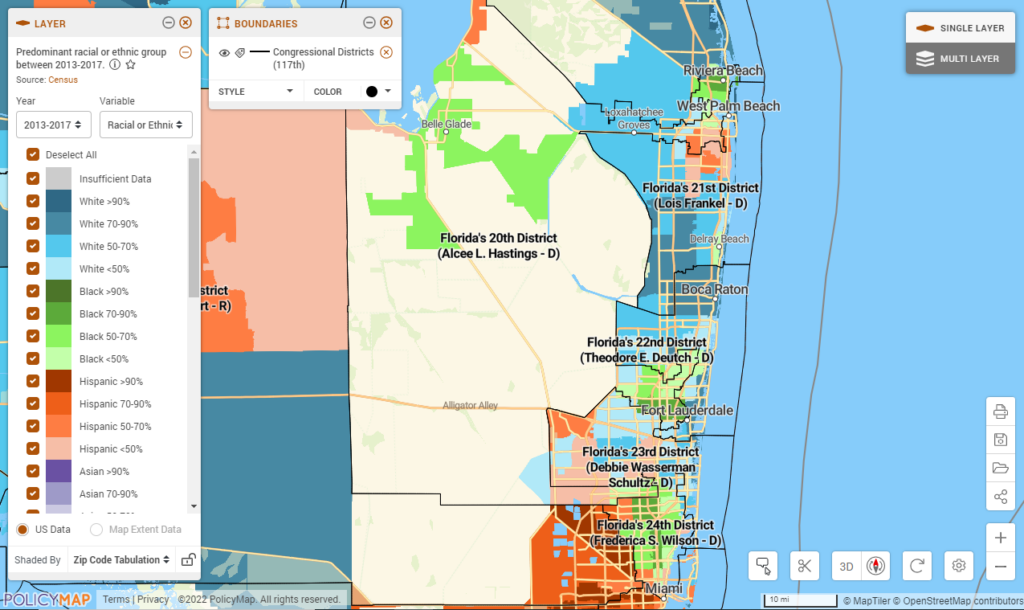
However, there is a fine line between concentrating voters to secure their representation and over-concentrating a group to remove their ability to influence the outcome of surrounding districts. For this reason, several legal cases has limited the power of minority-majority districts, most notably in Shaw v. Reno (1993) which forced North Carolina to not cluster all of its African American population into one congressional district. North Carolina’s First Congressional District was already predominantly African American before the 2010 redistricting, afterwards for the 114th Congress the districts were redrawn to include many additional nearby concentrations of African American voters. By looking at maps of racial composition with 114th Congressional Districts boundaries, it is clear that North Carolina’s First District snakes through the state to capture most of the predominantly black population.

In May of 2017 the U.S. Supreme Court again found that North Carolina had unnecessarily used “race as the predominant factor in drawing district lines” and without good reason, despite changes the previous gerrymandered districts. Despite improvements, the 115th Congressional Districts in North Carolina are still predominantly aligned around race, which can be seen by comparing predominant racial and ethnic groups with 115th Congressional District boundaries.
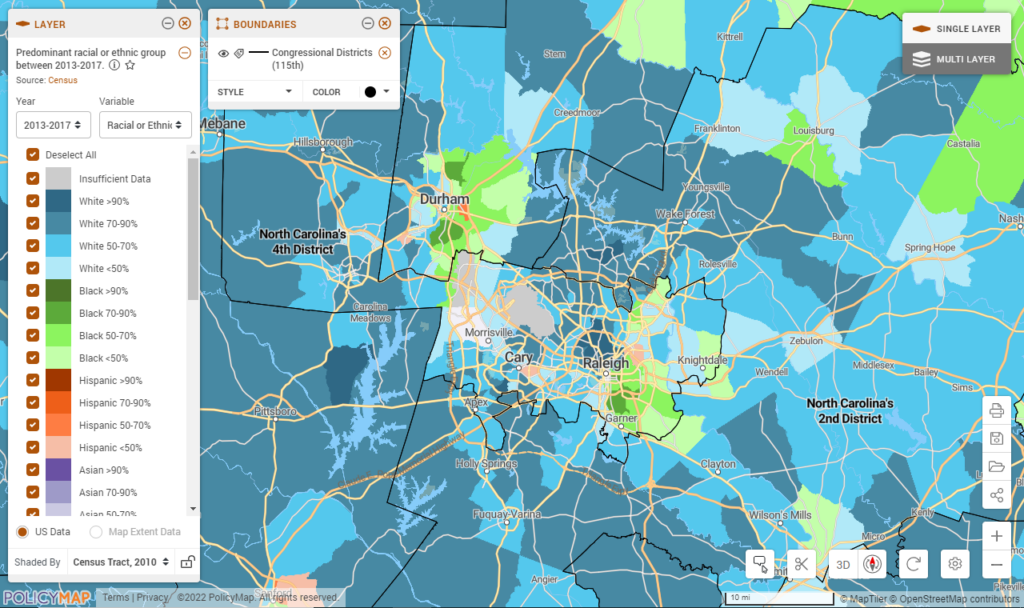
For a more detailed discussion of the benefits and drawbacks of minority-majority districts see this post by Grant Hayden.
Cracking
The second strategy, “cracking,” employs the opposite technique by breaking a voting bloc into multiple districts so that their votes will be watered down and not constitute a majority anywhere. Redistricting in Maryland after 2010 reveals a how the typically Republican district in the North was split into other districts and thereafter each of those districts voted majority Democrat.

Before 2010 the northern most Congressional district in Maryland consistently voted in favor of a Republican representative. However, after the redistricting following the 2010 census, the district was divided across several other districts, each of which consistently voted thereafter for Democrat representatives. It is likely that the change in voting was due to splitting the Republican voters into minorities in each of the new Democrat-leaning districts. See PolicyMap maps on U.S. House of Representatives margins of victory for more historic data for Maryland.
Cracking influences more than just the political party of the representative being elected. Many states require that districts not separate “communities of interest,” which form around issues of social, cultural racial, ethnic and economic interests. The motivation behind keeping these groups in the same voting block is to give them the power to elect a representative that can advocate on their behalf for relevant legislation and funding priorities. The main issue behind cracking is that it splits potential “communities of interest” and removes their ability to elect advocates that champion relevant issues and concerns to those communities.
For instance, Fair Districts PA, a nonprofit advocating against gerrymandering in Pennsylvania, has pointed out that although Montgomery County, PA has a large enough population to constitute its own congressional district, it is instead distributed across 5 districts, as seen in the map below. The chances that that each of those representatives will advocate for county priorities are severely limited the more split each representatives district is across interest groups.
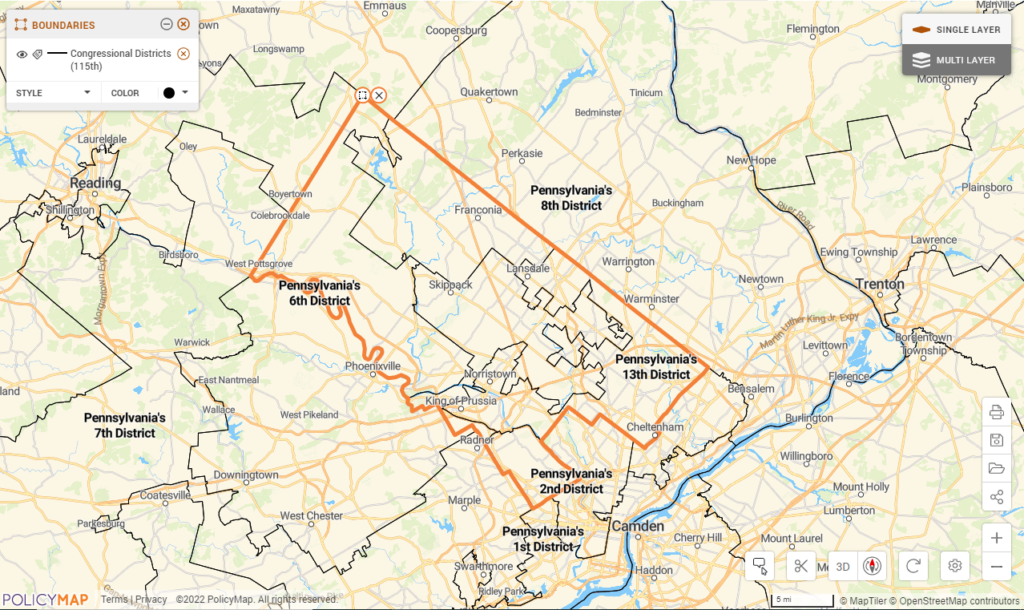
Other Gerrymandering Techniques
There are two other variations on gerrymandering that are used. The first is called sweetheart gerrymandering, where representatives of both parties design the districts to favor the incumbent representatives. This also called the bipartisan handshake and favors the status quo, regardless of voter opinion. The second type of gerrymandering takes advantage of the fact that prison populations are counted as residents in the prison’s district, despite not being able to vote. The voters in districts with a large prison population have more influence over who is elected than they would otherwise without the inclusion of the prison in that district.
So how do we quantify and work to solve the issue of gerrymandering? We will explore some of the solutions to gerrymandering in the next post.